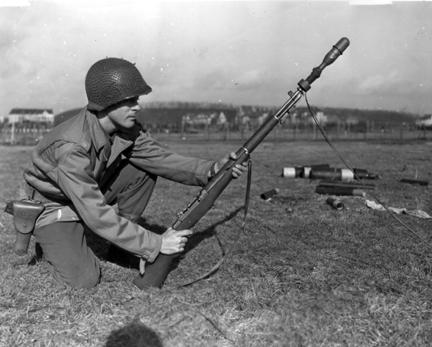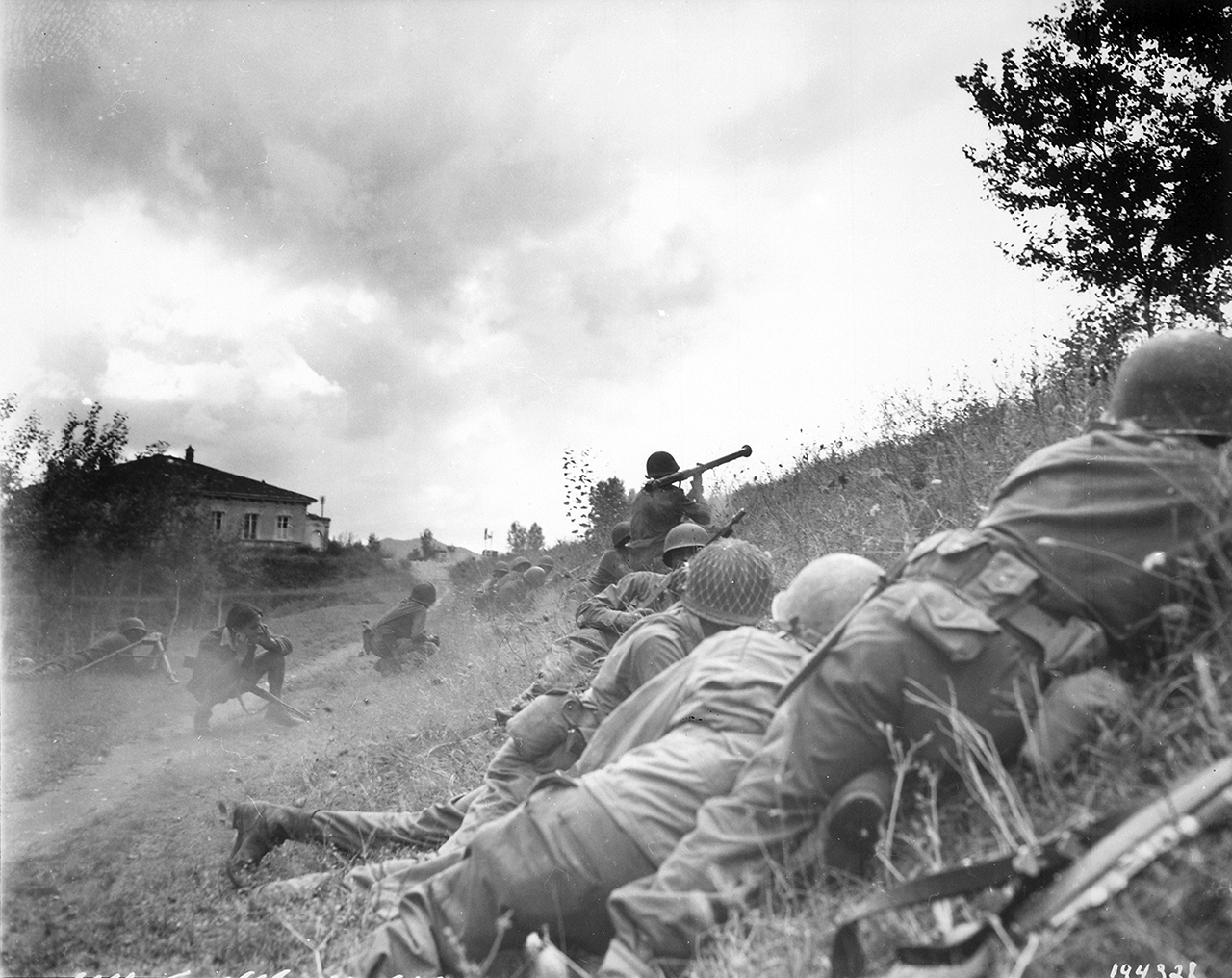|
American Logistics In The Normandy Campaign
American logistics in the Normandy campaign played a key role in the success of Operation Overlord, the Allied invasion of northwest Europe during World War II. The campaign officially commenced on D-Day, 6 June 1944, and ended on 24 July, the day before the launch of Operation Cobra. The Services of Supply (SOS) was formed under the command of Major General John C. H. Lee in May 1942 to provide logistical support to the European Theater of Operations, United States Army. From February 1944 on, the SOS was increasingly referred to as the Communications Zone (COMZ). Between May 1942 and May 1944, Operation Bolero, the buildup of American troops and supplies in the UK, proceeded fitfully and, by June 1944 1,526,965 US troops were in the UK, of whom 459,511 were part of the COMZ. The Overlord plan called for the early capture of Cherbourg, and a rapid American advance to secure the Brittany ports and Quiberon Bay, which was to be developed as a port. Crucially, the logistical p ... [...More Info...] [...Related Items...] OR: [Wikipedia] [Google] [Baidu] |
Omaha Beach
Omaha Beach was one of five beach landing sectors designated for the amphibious assault component of operation Overlord during the Second World War. On June 6, 1944, the Allies invaded German-occupied France with the Normandy landings. "Omaha" refers to an section of the coast of Normandy, France, facing the English Channel, from east of Sainte-Honorine-des-Pertes to west of Vierville-sur-Mer on the right bank of the Douve River estuary. Landings here were necessary to link the British landings to the east at Gold with the American landing to the west at Utah, thus providing a continuous lodgement on the Normandy coast of the Bay of the Seine. Taking Omaha was to be the responsibility of United States Army troops, with sea transport, mine sweeping, and a naval bombardment force provided predominantly by the United States Navy and Coast Guard, with contributions from the British, Canadian and Free French navies. The primary objective at Omaha was to secure a beachhead deep ... [...More Info...] [...Related Items...] OR: [Wikipedia] [Google] [Baidu] |
Europe First
Europe first, also known as Germany first, was the key element of the grand strategy agreed upon by the United States and the United Kingdom during World War II. According to this policy, the United States and the United Kingdom would use the preponderance of their resources to subdue Nazi Germany in Europe first. Simultaneously, they would fight a holding action against Japan in the Pacific, using fewer resources. After the defeat of Germany—considered the greatest threat to the UK and the Soviet Union—all Allied forces could be concentrated against Japan. At the December 1941 Arcadia Conference between President Franklin Roosevelt and Prime Minister Winston Churchill in Washington, shortly after the United States entered the War, the decision for the "Europe First" strategy was affirmed. However, U.S. statistics show that the United States devoted more resources in the early part of the war to stopping the advance of Japan, and not until 1944 was a clear preponderance of U.S. ... [...More Info...] [...Related Items...] OR: [Wikipedia] [Google] [Baidu] |
Washington, DC
) , image_skyline = , image_caption = Clockwise from top left: the Washington Monument and Lincoln Memorial on the National Mall, United States Capitol, Logan Circle, Jefferson Memorial, White House, Adams Morgan, National Cathedral , image_flag = Flag of the District of Columbia.svg , image_seal = Seal of the District of Columbia.svg , nickname = D.C., The District , image_map = , map_caption = Interactive map of Washington, D.C. , coordinates = , subdivision_type = Country , subdivision_name = , established_title = Residence Act , established_date = 1790 , named_for = George Washington, Christopher Columbus , established_title1 = Organized , established_date1 = 1801 , established_title2 = Consolidated , established_date2 = 1871 , established_title3 = Home Rule Ac ... [...More Info...] [...Related Items...] OR: [Wikipedia] [Google] [Baidu] |
War Plan Black
One of the United States color-coded war plans, War Plan Black was the name of an American military plan to fight Germany in the early 20th century. The best-known version was conceived as a contingency plan during World War I in case France France (), officially the French Republic ( ), is a country primarily located in Western Europe. It also comprises of overseas regions and territories in the Americas and the Atlantic, Pacific and Indian Oceans. Its metropolitan area ... fell and the Germans attempted to seize French possessions in the Caribbean or to launch an attack on the eastern seaboard. The United States was to plant mines and have submarines on patrol at sites Germany might seize for a foothold in the Caribbean. The plan was revised in 1916 to concentrate the main US naval fleet in New England, and from there defend the US from the German navy. Following Germany's defeat, the plan lost importance. See also * Imperial German plans for the invasion of t ... [...More Info...] [...Related Items...] OR: [Wikipedia] [Google] [Baidu] |
M7 Grenade Launcher
The M7 grenade launcher, formally rifle grenade launcher, M7, was a 22 mm rifle grenade launcher attachment for the M1 Garand rifle that saw widespread use throughout World War II and the Korean War. The M7 was a tube-shaped device, with one end slotting over the muzzle of the rifle and attaching to the bayonet mount, and the other end holding the grenade in place. Blank cartridges were loaded into the rifle prior to firing. When fired, the expanding gases generated by the cartridges propelled the grenade forward with considerable force. The M7 could fire grenades up to , compared with the maximum of achieved by a hand-thrown grenade. Anti-armor ( M9), Fragmentation (M17), and smoke grenades (M22) were available for the M7. Development When the United States entered World War II at the end of 1941, all infantry were issued with the Mk 2 fragmentation hand grenade. Owing to its hand-thrown nature, it had a range of only about and could not be used against armored targets. T ... [...More Info...] [...Related Items...] OR: [Wikipedia] [Google] [Baidu] |
M1918 Browning Automatic Rifle
The Browning Automatic Rifle (BAR) is a family of American automatic rifles and machine guns used by the United States and numerous other countries during the 20th century. The primary variant of the BAR series was the M1918, chambered for the .30-06 Springfield rifle cartridge and designed by John Browning in 1917 for the American Expeditionary Forces in Europe as a replacement for the French-made Chauchat and M1909 Benét–Mercié machine guns that US forces had previously been issued. The BAR was designed to be carried by infantrymen during an assault Article by Maxim Popenker, 2014. advance while supported by the sling over the shoulder, or to be fired from the hip. This is a concept called " walking fire"—thought to be necessary for the individual soldier during trench warfare. The BAR never entirely lived up to the original hopes of the War Department as either a rifle or a machine gun. The US Army, in practice, used the BAR as a light machine gun, often fired from a ... [...More Info...] [...Related Items...] OR: [Wikipedia] [Google] [Baidu] |
Bazooka
Bazooka () is the common name for a man-portable recoilless anti-tank rocket launcher weapon, widely deployed by the United States Army, especially during World War II. Also referred to as the "stovepipe", the innovative bazooka was among the first generation of rocket-propelled anti-tank weapons used in infantry combat. Featuring a solid-propellant rocket for propulsion, it allowed for high-explosive anti-tank (HEAT) warheads to be delivered against armored vehicles, machine gun nests, and fortified bunkers at ranges beyond that of a standard thrown grenade or mine. The universally applied nickname arose from the M1 variant's vague resemblance to the musical instrument called a " bazooka" invented and popularized by 1930s American comedian Bob Burns. During World War II, the German armed forces captured several bazookas in early North African and Eastern Front encounters and soon reverse engineered their own version, increasing the warhead diameter to 8.8 cm (amon ... [...More Info...] [...Related Items...] OR: [Wikipedia] [Google] [Baidu] |
Mortar (weapon)
A mortar is usually a simple, lightweight, man-portable, muzzle-loaded weapon, consisting of a smooth-bore (although some models use a rifled barrel) metal tube fixed to a base plate (to spread out the recoil) with a lightweight bipod mount and a sight. They launch explosive shells (technically called bombs) in high-arcing ballistic trajectories. Mortars are typically used as indirect fire weapons for close fire support with a variety of ammunition. History Mortars have been used for hundreds of years. The earliest mortars were used in Korea in a 1413 naval battle when Korean gunsmiths developed the ''wan'gu'' (gourd-shaped mortar) (완구, 碗口). The earliest version of the ''wan'gu'' dates back to 1407. Choi Hae-san (최해산, 崔海山) (1380–1443), the son of Choe Mu-seon (최무선, 崔茂宣) (1325–1395), is generally credited with inventing the ''wan'gu''. In the Ming dynasty, general Qi Jiguang recorded the use of a mini cannon called the Hu dun pao that ... [...More Info...] [...Related Items...] OR: [Wikipedia] [Google] [Baidu] |
Artillery
Artillery is a class of heavy military ranged weapons that launch munitions far beyond the range and power of infantry firearms. Early artillery development focused on the ability to breach defensive walls and fortifications during sieges, and led to heavy, fairly immobile siege engines. As technology improved, lighter, more mobile field artillery cannons developed for battlefield use. This development continues today; modern self-propelled artillery vehicles are highly mobile weapons of great versatility generally providing the largest share of an army's total firepower. Originally, the word "artillery" referred to any group of soldiers primarily armed with some form of manufactured weapon or armor. Since the introduction of gunpowder and cannon, "artillery" has largely meant cannons, and in contemporary usage, usually refers to shell-firing guns, howitzers, and mortars (collectively called ''barrel artillery'', ''cannon artillery'', ''gun artillery'', or - a layman t ... [...More Info...] [...Related Items...] OR: [Wikipedia] [Google] [Baidu] |
Bocage
Bocage (, ) is a terrain of mixed woodland and pasture characteristic of parts of Northern France, Southern England, Ireland, the Netherlands and Northern Germany, in regions where pastoral farming is the dominant land use. ''Bocage'' may also refer to a small forest, a decorative element of leaves, or a type of rubble-work, comparable with the English use of "rustic" in relation to garden ornamentation. In the decorative arts, especially porcelain, it refers to a leafy screen spreading above and behind figures. Though found on continental figures, it is something of an English speciality, beginning in the mid-18th century, especially in Chelsea porcelain, and later spreading to more downmarket Staffordshire pottery figures. In English, ''bocage'' refers to a terrain of mixed woodland and pasture, with fields and winding country lanes sunken between narrow low ridges and banks surmounted by tall thick hedgerows that break the wind but also limit visibility. It is the sort ... [...More Info...] [...Related Items...] OR: [Wikipedia] [Google] [Baidu] |





_MET_DP-12374-056_(cropped).jpg)